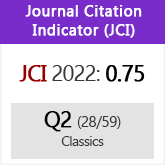El ejemplo histórico en los discursos de Elio Aristides: el episodio de los heraldos de Darío en las Guerras Médicas (Panatenaico 97-100 Lenz-Behr)
DOI:
https://doi.org/10.3989/emerita.2017.15.1629Palabras clave:
Elio Aristides, Retórica, ejemplo histórico, Guerras Médicas, heraldosResumen
En este artículo estudiamos el uso del ejemplo histórico desde la perspectiva retórica en la oratoria de Elio Aristides. Los estudios al respecto se han dirigido hasta ahora a cuestiones propiamente históricas y de Quellenforschung. Nosotros partimos, sin embargo, de la determinación de los componentes persuasivos del discurso, en general, y del ejemplo (παράδειγμα), en particular, por el sistema de la Retórica. Analizamos, luego, cómo determinados temas y motivos históricos constituidos en παραδείγματα, esto es, en modelos y precedentes del pasado con valor retórico, se integran tanto en el tejido argumentativo como estilístico del discurso. El ejemplo histórico que analizamos aquí es el conformado en el Panatenaico con lo que sucedió en Atenas en el año 491 a. C. con los heraldos enviados a Grecia por Darío en los comienzos de la Primera Guerra Médica.
Descargas
Citas
Akujarvi, J. 2005: Researcher, Traveller, Narrator: Studies in Pausanias' Periegesis, Estocolmo.
Beecke, E. 1905: Die historischen Angaben in Aelius Aristides Panathenaikos auf ihre Quellen untersucht, Estrasburgo.
Behr, Ch. A. 1968: Aelius Arristides and the Sacred Tales, Amsterdam.
Beloch, K. J. 1914: Griechische Geschichte II 2, 1, Estrasburgo.
Bengston, H. 19694 : Griechische Geschichte. Von den Anfängen bis in die römische Kaiserzeit , Múnich.
Borg, B. (ed.) 2004: Paideia. The World of the Second Sophistic , Berlín.
Boulanger, A. 1923: Aelius Aristide et la Sophistique dans la province d'Asie au IIè siècle de notre ère, París.
Bowie, E. L. 1981: «Los griegos y su pasado en la Segunda Sofistica», en Finley, M. I. (ed.), Estudios sobre historia antigua, Madrid, pp. 185-231.
Buchheit, V. 1960: Untersuchungen zur Theorie des Genos epideiktikon von Gorgias bis Aristoteles, Múnich.
Caballero, J. A. 2007: «Roma en la obra del rétor Elio Aristides», en Sánchez Ostiz, Á., Torres Guerra, J. B. y Martínez, R. (eds.), De Grecia a Roma y de Roma a Grecia: un camino de ida y vuelta, Pamplona, pp. 91-116.
Caballero, J. A. 2015: «De la historia a la retórica: el uso del exemplum en la oratoria política», en García, D. y Puig, L. (eds.), Retórica, argumentación y política: lecturas e interpretaciones, México, pp. 165-196.
Cortés, J. M. 1995: Elio Aristides. Un sofista griego en el Imperio Romano, Madrid.
Day, J. W. 1980: The Glory of Athens: the Popular Tradition as Reflected in the Panathenaicus of Aelius Aristides, Chicago.
Desideri, P. 2014: «Storia declamata e storia scritta nel secondo secolo dell' impero: Dione, Plutarco e la rinascita della cultura greca», en Mestre, F. y Gómez, P. (eds.), Three Centuries of Greek Culture under the Roman Empire, Barcelona, pp. 183-199.
Follet, S. 1976: Athènes au IIe et au IIIe siècle. Études chronologiques et prosopographiques, París.
Fornara, Ch. W. 1971: «Themistocles Archonship», Historia 20, pp. 257-271.
Gascó, F. 1992: «Elio Aristides: historias griegas para tiempos romanos», en Falque, E. y Gascó, F. (eds.), El pasado renacido. Uso y abuso de la tradición clásica, Sevilla, pp. 39-54.
Ghinatti, F. 1970: I gruppi politici ateniesi fino alle guerre persiane, Roma.
Goblot-Cahen, C. 1999: «Les hérauts et la violence», CCG 10, pp. 189-207. https://doi.org/10.3406/ccgg.1999.1500
Goblot-Cahen, C. 2003: «Les hérauts grecs agents et victimes de châtiments», Hypothèses 1, pp. 135-144. https://doi.org/10.3917/hyp.021.0135
Hernández de la Fuente, D. 2013: «Elio Aristides como modelo retórico desde la Antigüedad tardía al Renacimiento», en García-Gasco, R., González Sánchez, S., Hernández de la Fuente, D. (eds.), The Theodosian Age (A.D. 379-455): Power, Place, Belief and Learning at the End of the Western Empire, Oxford, pp. 223-228.
Hignett, C. 1963: Xerxes' Invasion of Greece, Oxford.
Iglesias Zoido, J. C. 2000: «El ejemplo histórico en Andócides», Anuario de estudios filológicos 23, pp. 229-242.
Jost, K. 1936: Das Beispiel und Vorbild der Vorfahren bei den attischen Rednern und Geschichtschreibern bis Demosthenes, Paderborn.
Kalkmann, A. 1886: Pausanias der Perieget: Untersuchungen über seine Schriftstellerei und seine Quellen, Berlín.
Kennedy, V. R. 1971: «Auxesis: a Concept of Rhetorical Amplification», Southern Speech Communication Journal 37, pp. 60-72. https://doi.org/10.1080/10417947109372124
Kraft, K. 1964: «Bemerkungen zu den Perserkriegen», Hermes 92, pp. 144-171.
Lanski, A. 2013: Emissaries in the Narrative of Herodotus, PhD University of Illinois-Urbana-Champaign.
Lausberg, H. 1975: Elementos de retórica literaria, Madrid. PMid:1181877
Lenardon, R. J. 1978: The saga of Themistocles, Londres.
Loraux, N. 1981: L'invention d'Athènes. Histoire de l'oraison funèbre dans la cité classique , París.
Mosley, D. J. 1973: Envoys and Diplomacy in ancient Greece , Wiesbaden.
Nicolai, R. 2004: Studi su Isocrate. La comunicazione letteraria nel IV sec. a. C. e i nuovi generi della prosa, Roma.
Nicolai, R. 2007: «Storia e storiografia nella scuola greca», en Fernández Delgado, J. A., Pordomingo, F. y Stramaglia, A. (eds.), Escuela y literatura en Grecia antigua, Cassino, pp. 39-66.
Nouhaud, M. 1982: L'utilisation de l'histoire par les orateurs attiques, París.
Oliver, J. 1968: The Civilizing Power. A Study of the Panathenaic Discourse of Aelius Aristides against the Background of Literature and Cultural Conflict. With Text, Translation, and Commentary, Filadelfia.
Oudot, E. 2005: «Athènes repeinte en cité grecque? Quelques remarques sur l'idéologie du Panathénaïque d'Aelius Aristide», Mètis N.S. 3, pp. 319-335.
Oudot, E. 2006a: «Au commencement était Athènes. Le Panathénaïque d'Aelius Aristide ou l'histoire abolie», Ktêma 31, pp. 227-244.
Oudot, E. 2006b: «L'Athènes primitive sous l'Empire romain: l'exemple du Panathénaïque d'Aelius Aristide», Anabases 3, pp. 195-212. https://doi.org/10.4000/anabases.2809
Oudot, E. 2008: «Aelius Aristides and Thucydides: Some Remarks about the Panathenaic Oration», en Harris, W. V. y Holmes, B. (eds.), Aelius Aristides between Greece, Rome, and the Gods, Leiden-Boston, pp. 31-50. https://doi.org/10.1163/ej.9789004172043.i-326.14
Pearson, L. 1941: «Historical Allusions in the Attic Orators», CPh 36, pp. 209-229. https://doi.org/10.1086/362511
Pernot, L. 1993: La rhétorique de l'éloge dans le monde gréco-roman, París.
Piccirilli, L. 1987: Temistocle, Aristide, Cimone, Tucidide di Melesia fra politicae propaganda, Génova.
Pownall, F. 2004: Lessons from the Past: The Moral Use of History in Fourth-Century Prose , Ann Arbor.
Ramón Palerm, V. 1992: Plutarco y Nepote. Fuentes e interpretación del modelo biográfico plutarqueo, Zaragoza.
Saïd, S. 2008: «Aristides' uses of myths», en Harris, W. V., Holmes, B. (eds.), Aelius Aristides between Greece, Rome, and the Gods, Leiden - Boston, pp. 51-67. https://doi.org/10.1163/ej.9789004172043.i-326.15
Schrader, C. 1989: «La deformación histórica en la oratoria ática: Andócides, III, 29, e IG II2 , 8», en La oratoria en Grecia y Roma , Teruel, pp. 31-68.
Schreiner, J. H. 1969: «Thucydides I, 93 and Themistocles during the 490's», SO 44, pp. 23-41.
Schröder, O. 1914: De laudibus Athenarum a poetis tragicis et ab oratoribus epidicticis excultis, Gotinga.
Sealey, R. 1976: «The Pit and the Well: the Persian Heralds of 491 B. C.», CJ 72, pp. 13-20.
Segre, M. 2004: Pausania come fonte storica: con un'appendice sulle Fonti storiche di Pausania per l'età ellenistica, Roma.
Walser, G. 1975: «Zum griechisch-persischen Verhältnis vor dem Hellenismus», Historische Zeitschrift 220, pp. 529-542. https://doi.org/10.1524/hzhz.1975.220.jg.529
Wéry, L. M. 1966: «Le meurtre des hérauts de Darius en 491 et l'inviolabilité des hérauts», AC 35, pp. 468-486.
Whitmarsh, T. 2005: The Second Sophistic (Greece and Rome - New Surveys in the Classics, 35), Oxford.
Worthington, I. 1994: «History and Oratorical Exploitation», en Worthington, I. (ed.), Persuasion: Greek Rhetoric in Action, Londres - Nueva York, pp. 109-129.
Descargas
Publicado
Cómo citar
Número
Sección
Licencia
Derechos de autor 2017 Consejo Superior de Investigaciones Científicas (CSIC)

Esta obra está bajo una licencia internacional Creative Commons Atribución 4.0.
© CSIC. Los originales publicados en las ediciones impresa y electrónica de esta Revista son propiedad del Consejo Superior de Investigaciones Científicas, siendo necesario citar la procedencia en cualquier reproducción parcial o total.Salvo indicación contraria, todos los contenidos de la edición electrónica se distribuyen bajo una licencia de uso y distribución “Creative Commons Reconocimiento 4.0 Internacional ” (CC BY 4.0). Puede consultar desde aquí la versión informativa y el texto legal de la licencia. Esta circunstancia ha de hacerse constar expresamente de esta forma cuando sea necesario.
No se autoriza el depósito en repositorios, páginas web personales o similares de cualquier otra versión distinta a la publicada por el editor.














